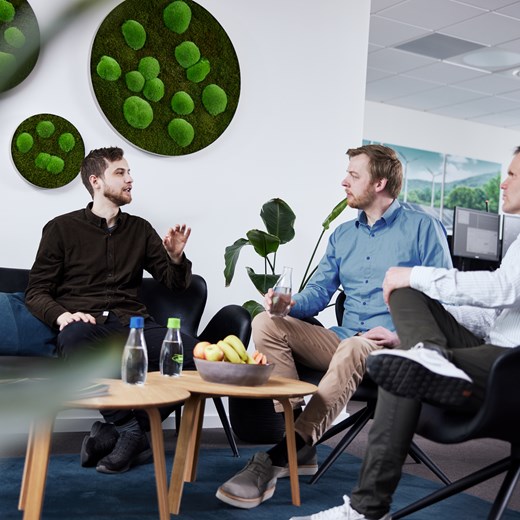What does a challenge sprint process look like at Digital Energy Hub?
1. Kick-off and Onboarding
The strategic partner, who has identified the strategic challenge for the specific sprint, collaborates with Digital Energy Hub to organize a kick-off webinar. This webinar follows an "open house" style, inviting the industry, with a specific focus on SMEs, to learn more about the challenge, preliminary business models and available data.
Afterwards, selected SMEs are onboarded and interviewed to determine if there is a match:
- Is there a match in terms of the SME finding the challenge interesting and seeing business potential?
- Is there a match for the hub to ensure that the SMEs can address the challenges effectively?
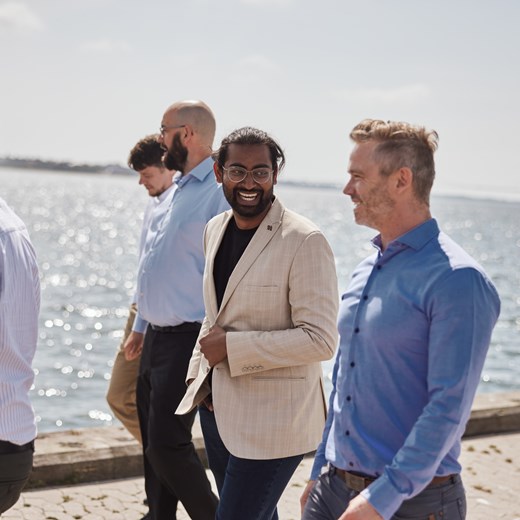
2. Digital Maturity
DigitalLead and Energy Cluster Denmark evaluate the digital maturity of the SMEs. This is done through:
- A questionnaire that serves as a benchmark for the SMEs' starting point.
- A follow-up discussion to determine and qualify the SMEs as preparation for initiating the challenge.

3. MasterClass and BusinessClass
A networking meeting where SMEs are presented with a more in-depth understanding of the challenge. In the MasterClass, the technical aspect of the challenge is presented in two parts:
- Presentation of the available data.
- Presentation of the related infrastructure and the opportunity to test solutions in Living Labs.
In the BusinessClass, potential digital business models within the field are presented. However, this serves only as inspiration, as the SMEs themselves have a strong focus on tailoring the business models to their advantage.
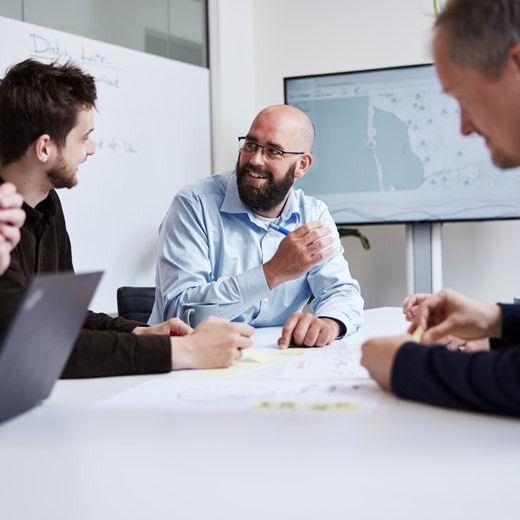
4. Solution Development and Mentoring
After the MasterClass and BusinessClass, the SMEs continue working on their own solution to the challenge for the next 30 days. The facilitating partners of Digital Energy Hub are available to assist with technical questions regarding data and infrastructure, as well as business development.
During this phase, a 1:1 mentoring space is created, allowing for in-depth discussions with each SME about their specific solution.

5. Presentation and Discussion of Results
The SMEs gather again to present and discuss their results, seeking to refine their digital solutions and business models in collaboration with the project team and the strategic partner who presented the challenge.
During this phase, feedback is provided to the SMEs to help them further develop their proof-of-concept or prototype.
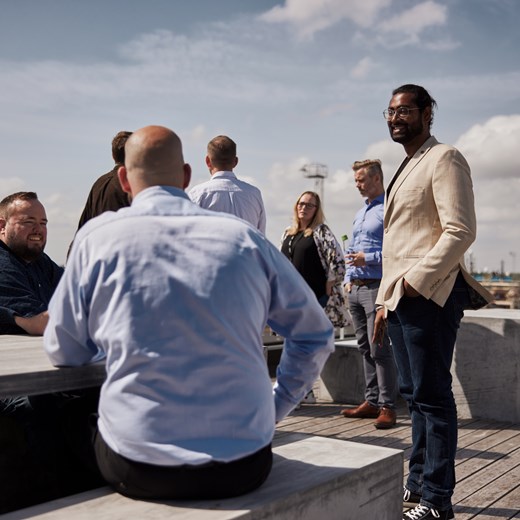
6. Product Finalization and International Mentoring
The SMEs finalize their products as proof-of-concept or prototype, depending on the level of maturity achieved, in the next 37 days. They can once again seek mentoring from Digital Energy Hub, with a particular focus on international mentoring on pitching in an international context to attract investments, with support from the Innovation Center in Silicon Valley.
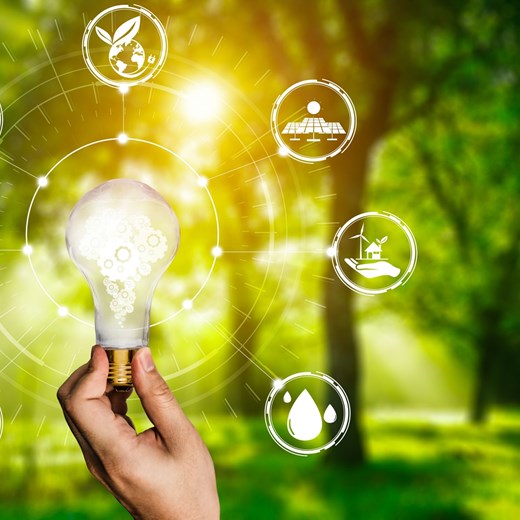
7. Final Pitch
In a format similar to "Shark Tank" or "Dragons' Den," the challenge sprint process concludes with a pitch from each SME. Representatives from four directions are present to evaluate how the product can be taken forward:
- Direct collaboration
The strategic partner assesses that the product is mature enough to be directly integrated into their business.
- International trajectory
The Innovation Center from Silicon Valley initiates a trajectory aimed at attracting international interest and investment in the product.
- Funding
Further maturation of the product is pursued by seeking funding with assistance from the clusters (Energy Cluster Denmark and DigitalLead).
- Digital twins
Further qualification of the product is achieved by having technical universities simulate the product and its impact in the energy sector using digital twins.
